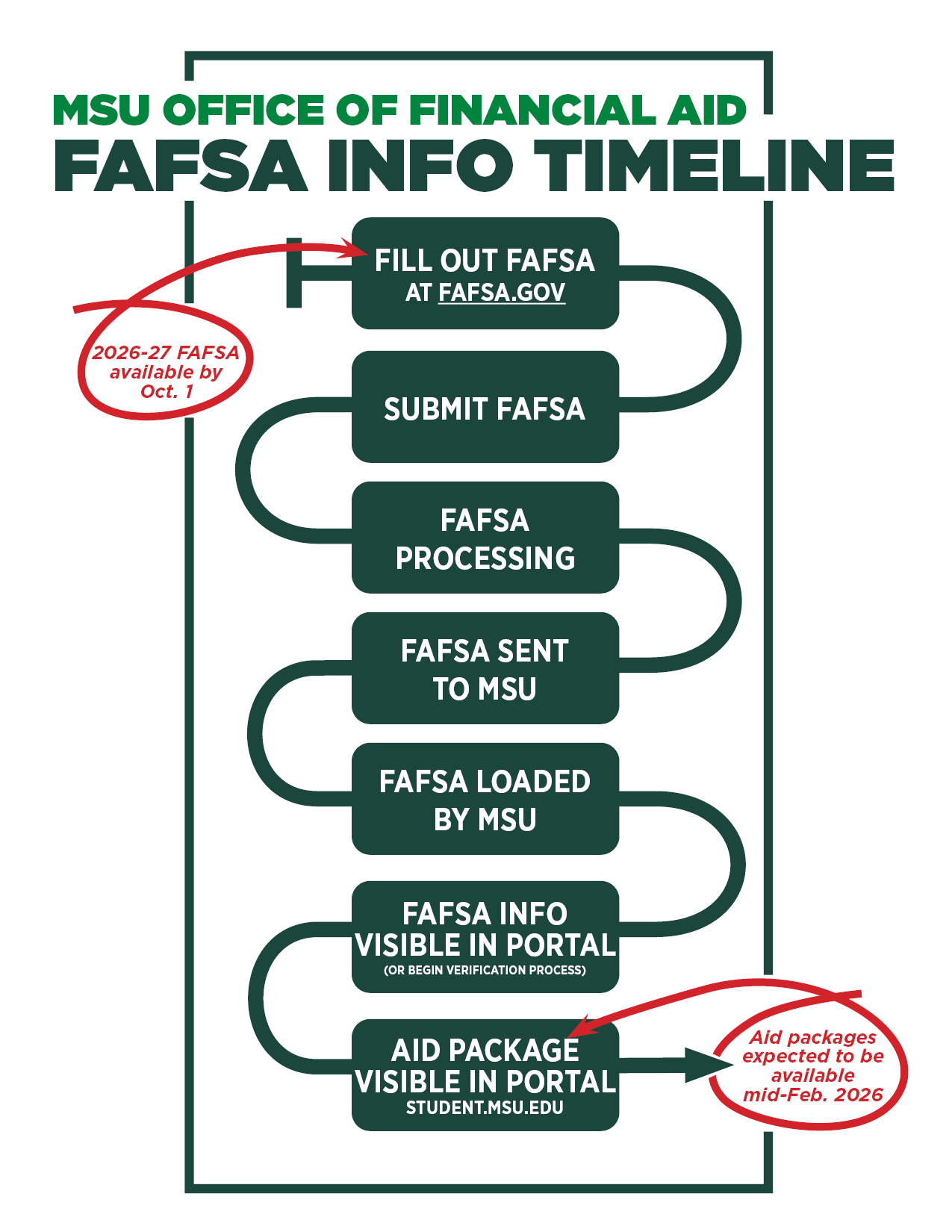2026-27 FAFSA Application Portal is now open at FAFSA.gov
The updated FAFSA only takes about 30 minutes to complete. We recommend every incoming and current Spartan complete their FAFSA as soon as it is available.
If this is your first time completing the FAFSA, students and parents who will be accessing the FAFSA can create an FSA ID now. This username and password is your key to accessing and signing the FAFSA. Since an FSA ID can take around three days to be verified and created, completing this process ahead of time means you will be all set when you are ready to complete the application.
Student financial aid award packages are available to view in your financial aid portal.
